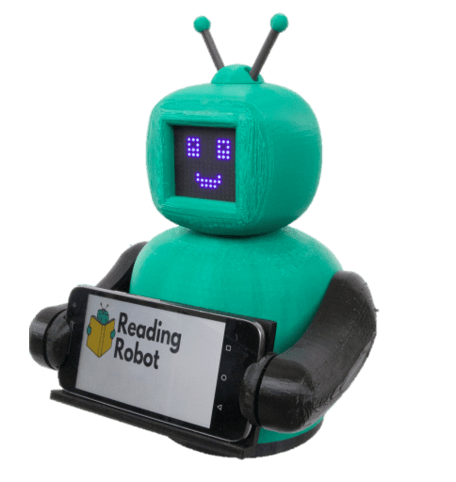Our Team
Meet the Reading Robot Project team!

Andrew Myers
SYSTEMS INTEGRATION LEAD
Major: Mechanical Engineering
Hometown: Santa Maria, CA
Interests: backpacking, surfing, and robotics

Gillian Watts
tESTING lEAD
Major: Biomedical Engineering
Hometown: Portland, OR
Interests: soccer, piano, and HGTV

Omeed Djassemi
SOFTWARE LEAD
Major: Biomedical Engineering
Hometown: San Luis Obispo, CA
Interests: music, sports, and non-invasive technology

Sabrinna Tan
ELECTRICAL LEAD
Major: Electrical Engineering
Hometown: Santa Rosa, CA
Interests: hiking, baking, and crime shows

Taylor Klein
Mechanical Lead
Major: Mechanical Engineering
Hometown: Seattle, WA
Interests: global health, outdoor education, biking, and backpacking
Acknowledgements
We would like to thank our project sponsors, Dr. Eric Espinoza-Wade and Dr. Jillian McCarthy for proposing this project and for their guidance and feedback throughout the past year. We would also like to acknowledge Karla Carichner, our senior project advisor, for her constant support and positive attitude, Dr. Vladimir Prodanov, for his technical assistance, as well as senior project advisors Dr. Lilly Laiho and Dr. Jim Widmann. Additionally, we would like to thank the reading and learning specialists who assisted us in the development of this project, including Cherie Hovey, Deborah Cleere, and Joyce Hansen. We would like to thank the families and children that participated in our user testing and past students who have worked on this project. Finally we would like to thank Charlie Refvem for his technical review of our design and the Industrial Technology & Packaging Department for lending its 3-D printer.
Reading Robot demo video
Our Project's Digital Poster
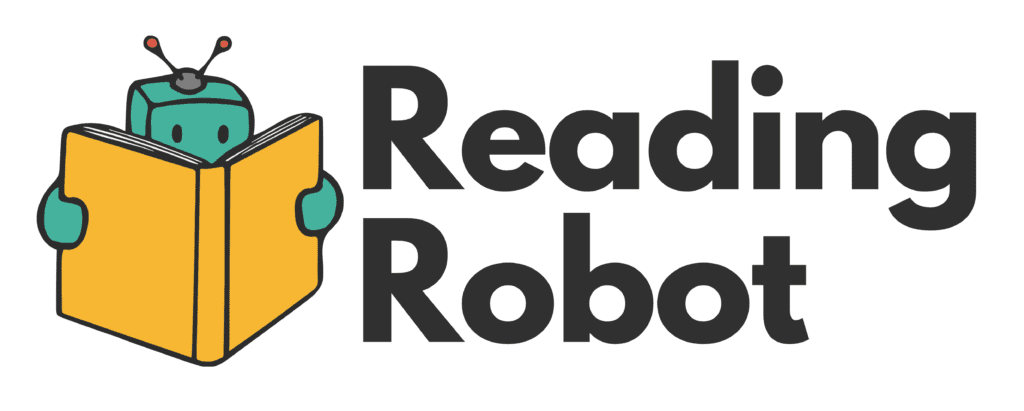
Hapi: a socially assistive robot created to help students with reading comprehension
Problem Statement
Literacy and verbal communication are fundamental life skills that determine success in our childhood and adult life. Presently, there is an insufficient availability of human experts to assist students in reading competency and comprehension. Our teams goal is to create an improved socially assistive robot for use by therapists, teachers, and parents to help children and adults develop reading skills while they do not have access to specialists.
Design Constraints
- Physical size: 10in x 8in x 6in
- Weight: < 10 lbs
- Duration of user engagement: 15 minutes (one session)
- Chamber temperature: < 158°F
- Device memory size: > 8 GB
- Durability: mechanical/electrical integrity at 4 times use cycle
Conceptual Design


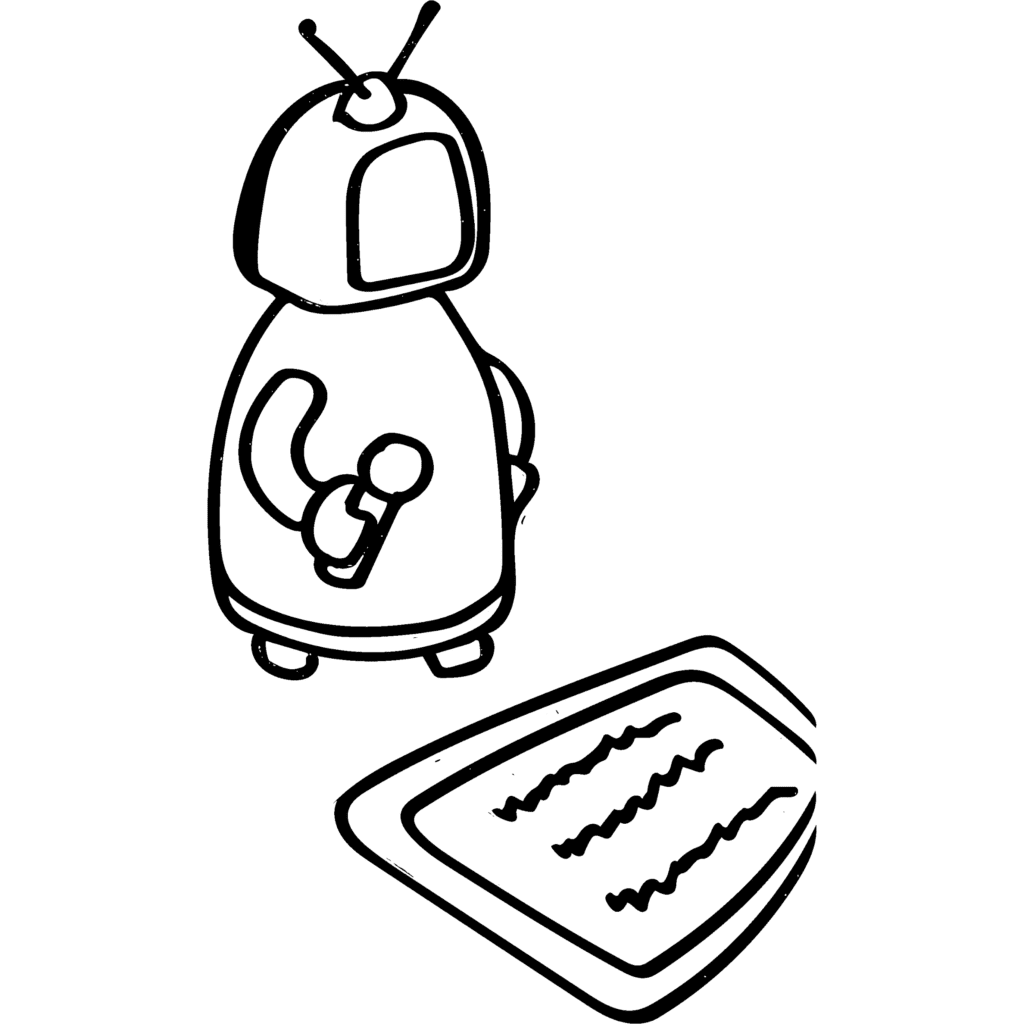
Brainstorming Concepts
The images above show our 3 initial concept options. We chose the second option, HAPI the Librarian (Hand Articulating Phone Interface), named after the idea of securing the phone in the robot’s hands, much like a librarian reading during story-time. We chose this concept because it allowed for the most versatility in reading interface (book, phone, tablet, etc.) and also would be able to give positive feedback to the user.
HAPI the Librarian has an LED screen face, antenna that can “wiggle,” and a motor in the arm to tilt the phone.
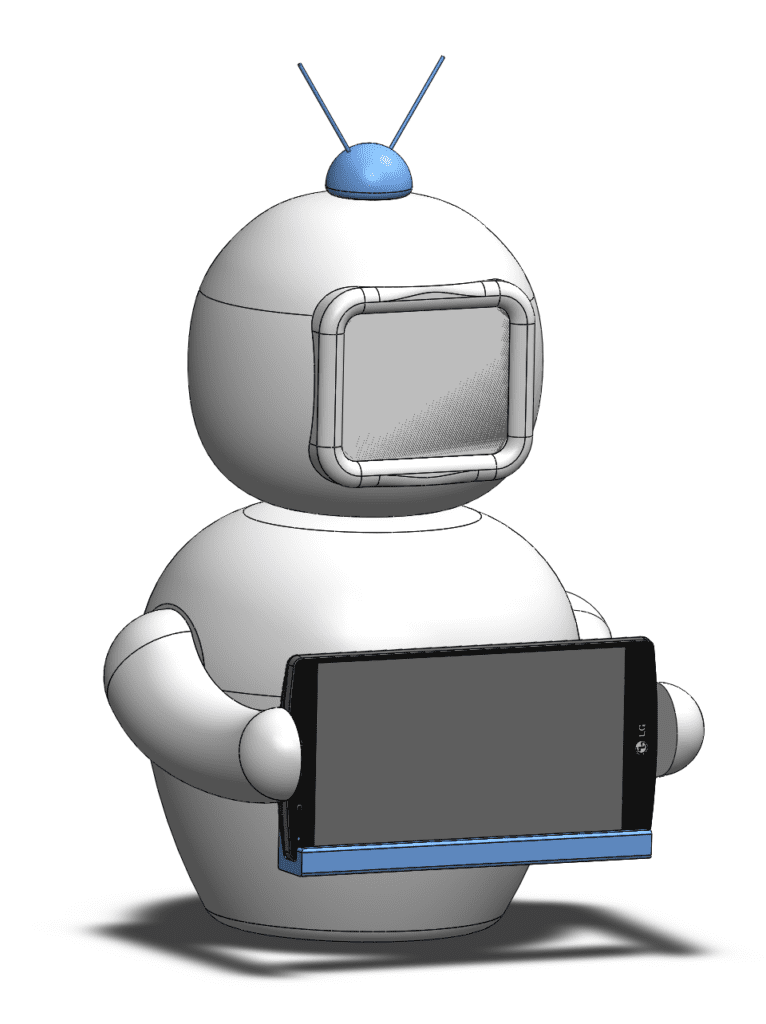
Analysis
Calculations
Initial Prototype
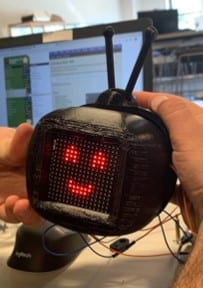

With our initial prototype, we were able to verify the functionality of several key design features, including the phone tilt mechanism and the antenna tilt mechanism. We also experiment with various LED array faces and colors. One of our most significant takeaways was a redesign of the antenna motion which originally seemed too erratic.
Manufacturing Process
After exploring possibilities of using a third party vendor to print the robot, we concluded it wasn’t the most economical option. We were able to print the robot in one of the team member’s homes using an Ultimaker 2+ printer. Components were ordered online and the robot was assembled by team members. A soldering iron was used to secure heat set inserts and configure the electrical components.
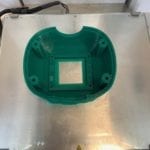
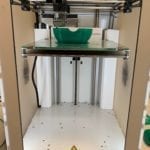
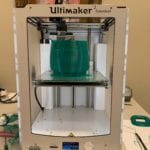
3-D Printing Process
Our printed circuit board (PCB) design was manufactured via a third party vendor, Sunstone circuits. We completed our own further electrical manufacturing such as board assembly and wiring.
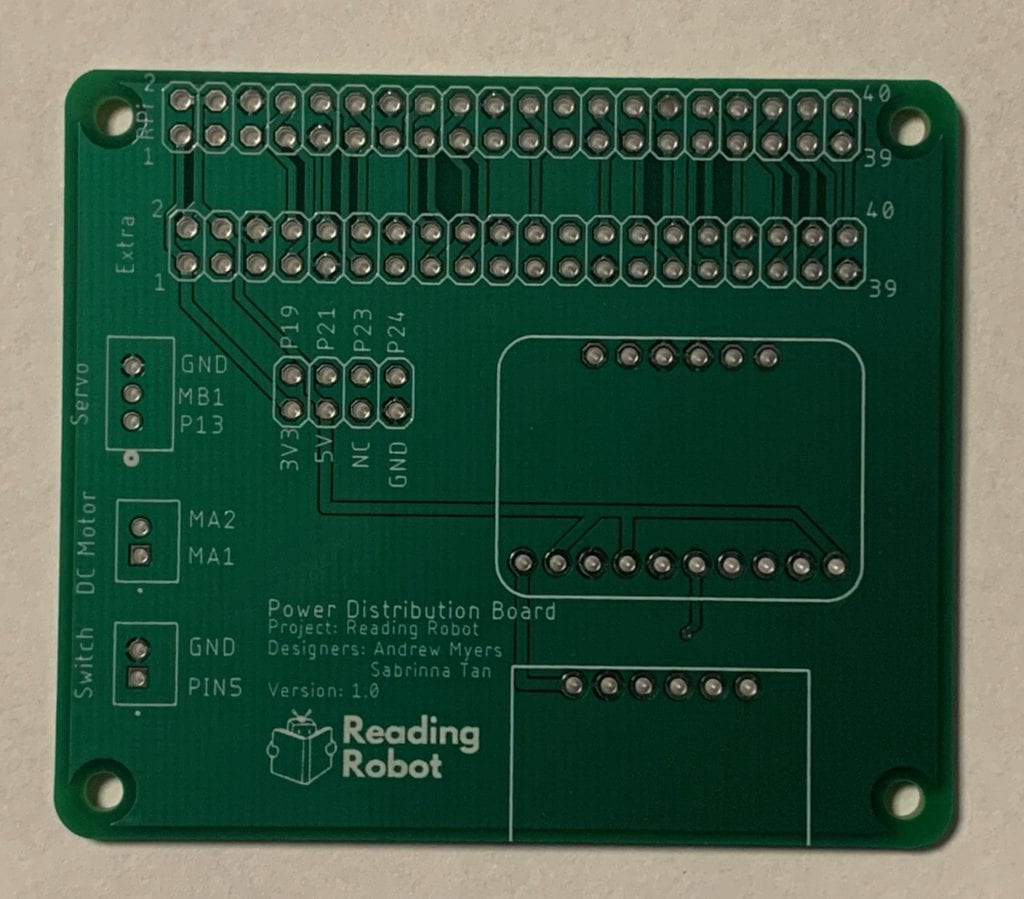
Manufactured printed circuit board (PCB)
Final Design
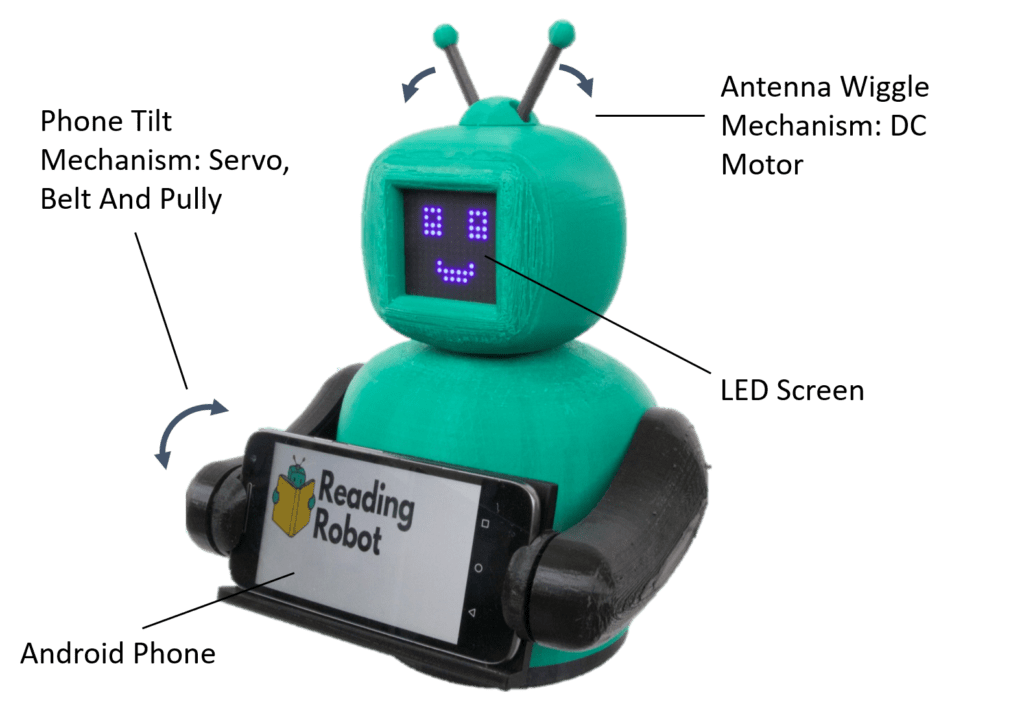
User Interface
- Robot introduces itself and “Begin Reading” button appears.
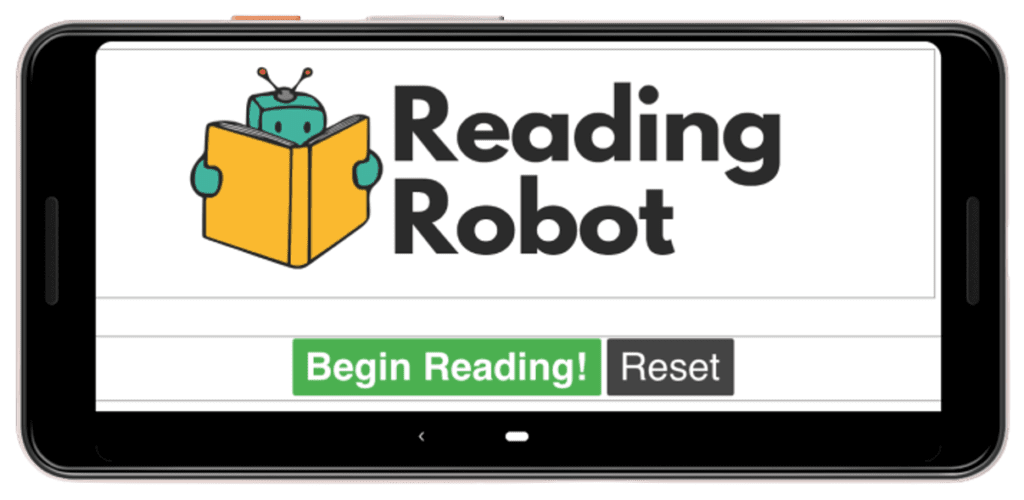
- Child presses “Begin Reading!” and reads passage aloud to the robot.
- App records and saves audio.
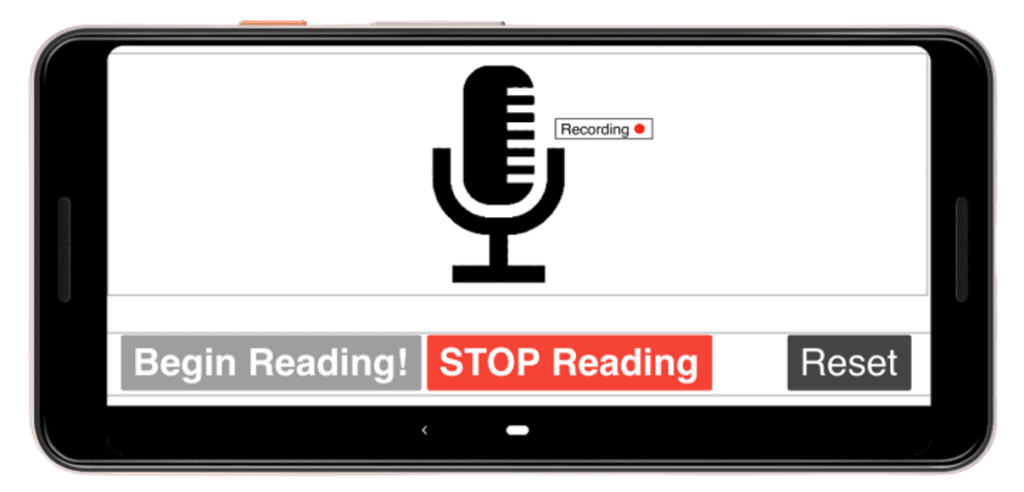
Robot asks child questions about the reading, the phone tilt and an audio cue is used to prompt child to speak.
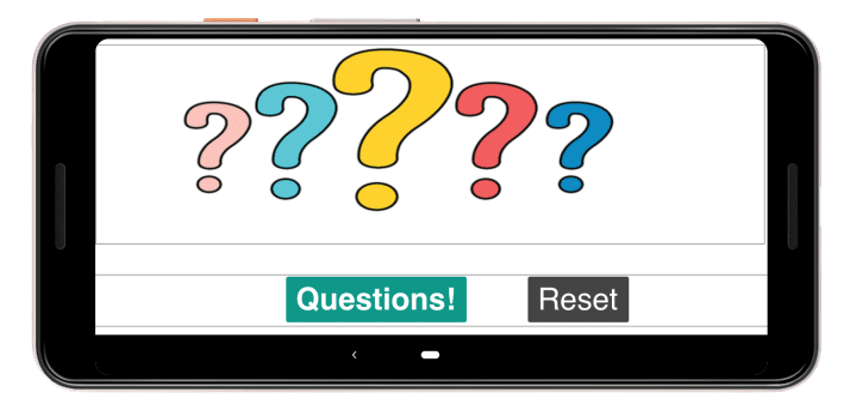
- Correct Answer: LED face smiles bigger, antenna wiggle, “Great work!”
- Incorrect Answer: LED face neutral, Robot repeats question, answer displayed after 2 tries.
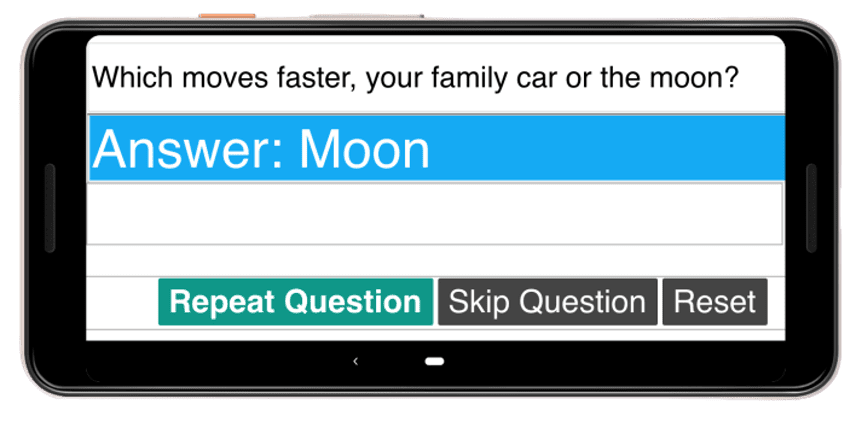
Electrical

- Raspberry Pi 4:Motor and Power control
- Power Distribution Board (PDB): Power isolation
- LED Array: Robot facial expressions
Mechanical
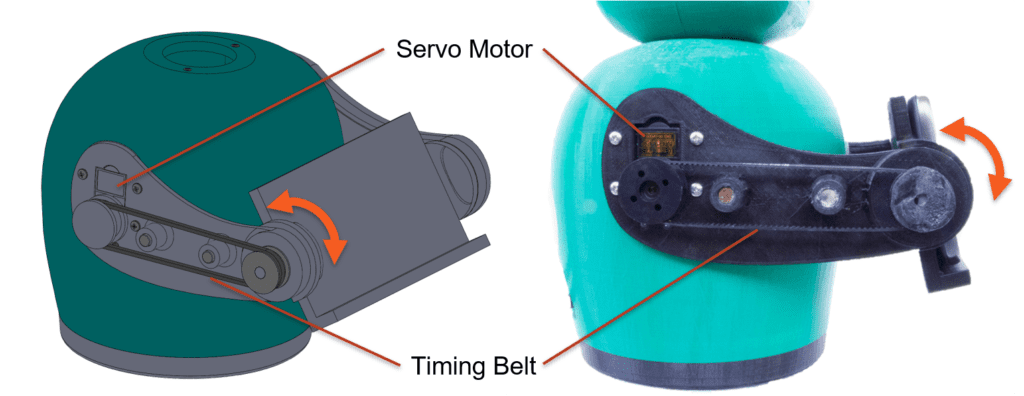
The phone tilt mechanism uses a servo motor housed in the shoulder of the robot and a belt and pulley system to tilt the phone towards the robots face then back towards the user.

The antenna mechanism uses a DC motor attached to an oval shaped crank. The crank moves the antenna fixture up and down, causing the antenna to wiggle.
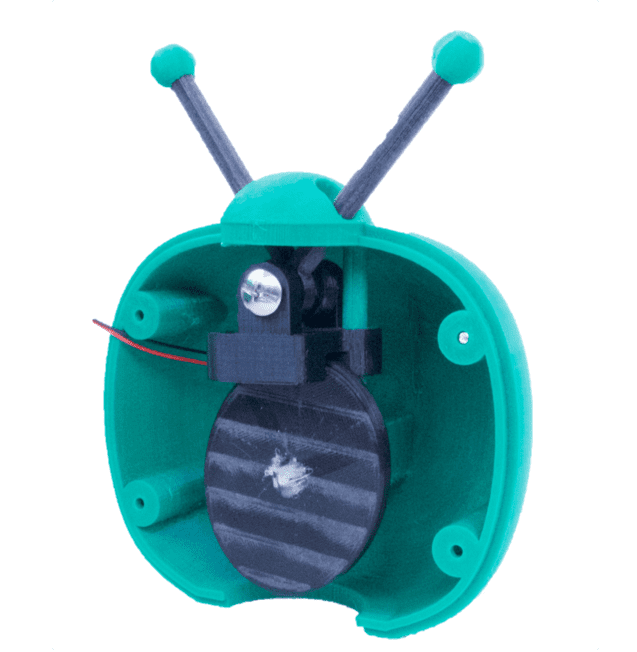
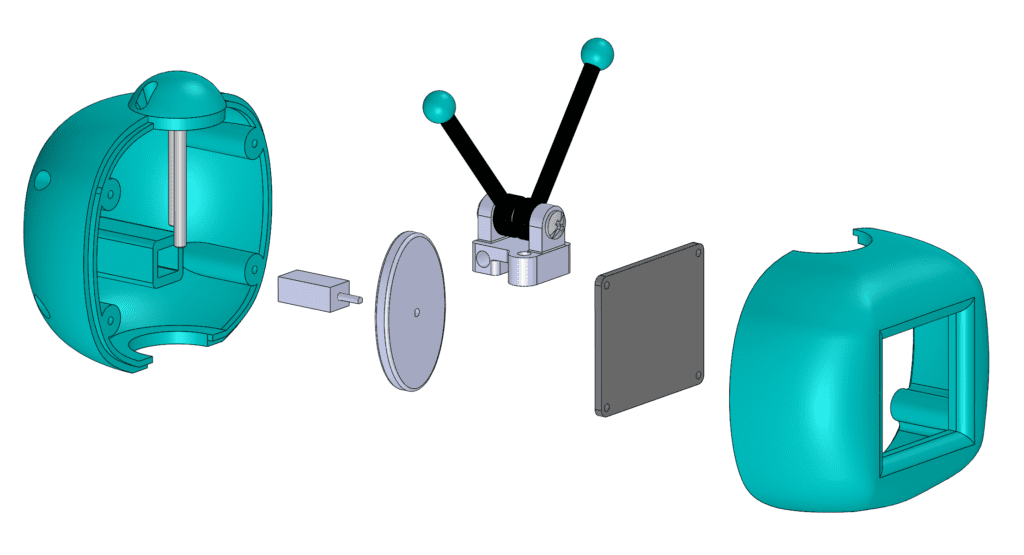
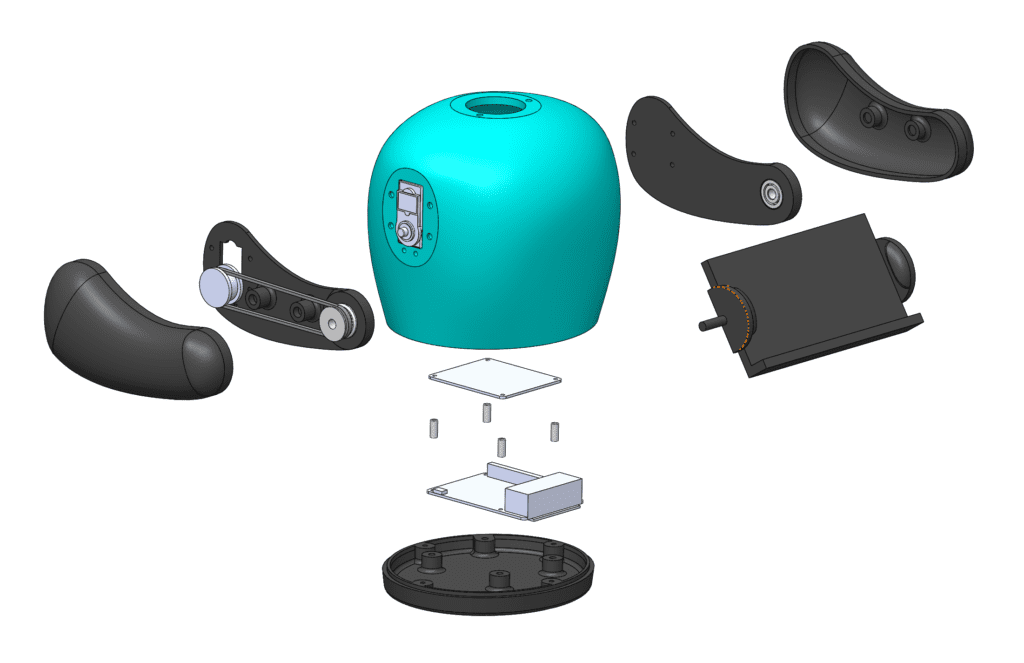
HAPI was designed for ease of assembly and disassembly. As shown above, the back and front of the head disconnect to access the antenna mechanism and LED screen. The electrical components, including the PDB and Raspberry Pi, can be assembled on the base of the body prior to body assembly. The wiring uses polarized connectors so that the robot can be disassembled.

Sponsors: Dr. Jillian MccArthy & Dr. Eric Espinoza-wade
Testing
Verification And Functionality Testing
Electrical Wiring Intergrity
- Test description: Cycle DC motor > 1000 times, check for wiring entanglement and connectivity
- Acceptance criteria: Wires remain connected and untangled
- Status: Passed
Durability
- Test: Drop from table height
- Acceptance criteria: no mechanical or electrical damage
- Status: Passed
- Test: Obtain steady state chamber temperature
- Acceptance criteria: Temperature does not exceed softening point of PLA (158°F)
- Status: Passed
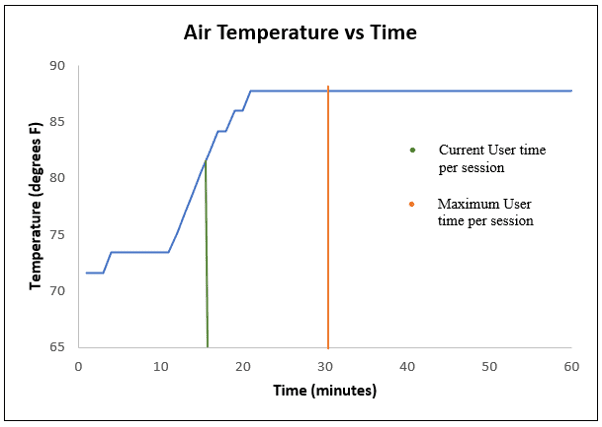
User Testing
Before performing user testing, each team member completed CITI Training and the testing proposal was approved by Cal Poly IRB. The robot was delivered to each participants’ home and the test was completed and recorded via video call. We found 5 participants, aged 6 though 9. Additional feedback was collected through a participant survey.
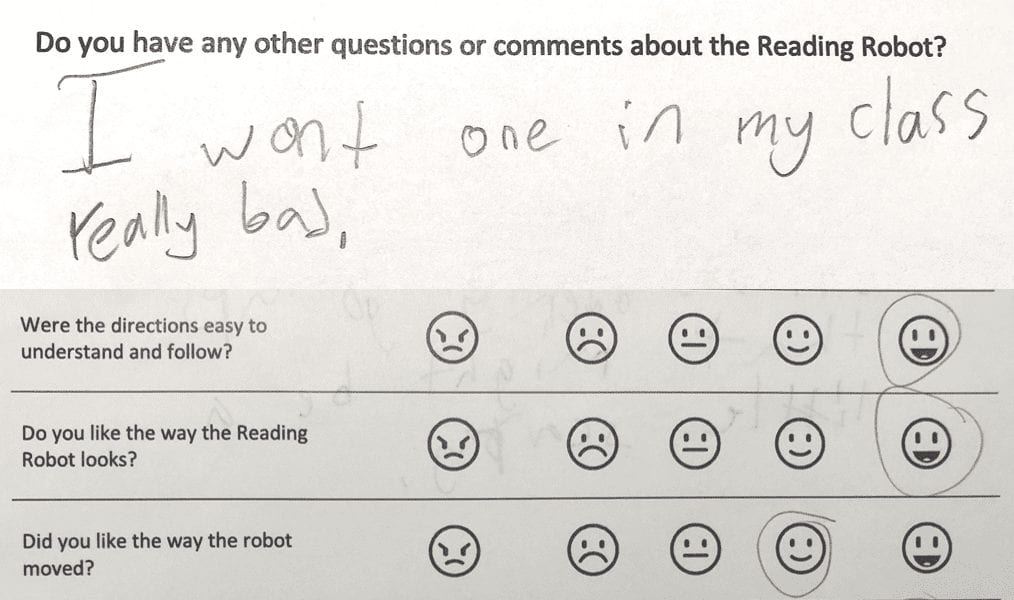
The user testing led to the following design changes:
- Added Skip, Repeat, and Reset buttons
- Displayed questions on screen
- Improved graphics
- Implemented button exclusion
Future Application
The team plans on passing off the robot to the project sponsors so development of the robot can continue. The project sponsors plan on applying for grants and potentially sponsoring another senior project. Next steps will likely include more user testing, as well as testing focused specifically on students with speech impairments. Future developments will likely include improving the software so it can analyze performance of reading passages and give feedback. Additionally, the speech recognition will likely need to be improved in order to consistently recognize higher pitched voices and readers with speech impairments.

Technical development will likely continue at California Polytechnic State University, San Luis Obispo.

Research will likely continue at the UT Augmentative & Alternative Communication, Language, & Literacy Lab
Recommendations
We would make the following recommendations for the improvement of the current system.
Reading Analysis
- Progress tracking so a student could see how many questions were answered correctly and incorrectly at the end of a session.
- Reading quality analysis so that the software could help identify where a student struggled while reading a passage.
- An online portal where both students an educators could view performance.
- Reading assistance so that if a student was struggling to read a word, the robot could help the child pronounce the word.
Compatibility and Accessibility:
- Implementation of an administration mode so an educator could edit passages and questions using an app.
- Compatibility with multiple different types of phones, including IOS.
- Improvements to the speech recognition system so it can better recognize higher pitched voices and students with speech impairments.

